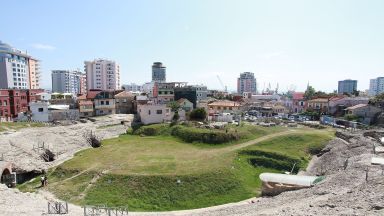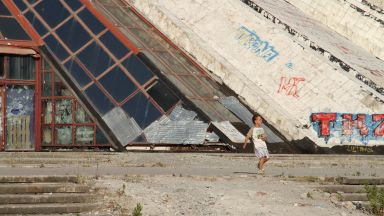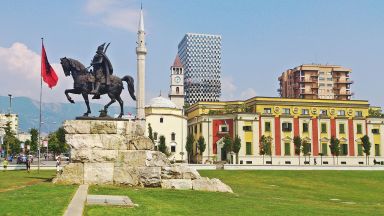Krujë: The Complete Guide
Krujë is a town 20 km north of Tirana in Albania. The name of the town comes from the Albanian word for the spring which is kroi, krua as the spring within the castle provided its inhabitants with water. Krujë was a quaint medieval village, situated between mountain peaks and the lush valley that extends all the way down to the Adriatic coast.
It was the home of the national hero Skanderbeg who led the resistance to the Ottoman invasions of the fifteenth century. Most visitors head towards the castle via the cobbled street of the Ottoman Bazaar, which is thronged with souvenir sellers. The castle houses the History Museum and the Ethnographic Museum.
The town is the northernmost stronghold of the Bektashism and has server interesting Bektashi sites including a teqe within the castle and one dedicated to the Sufi saint Sarı Saltık, a 13th-century Alevi Turkish dervish, in the mountains above the town.
Visiting Krujë for the first time and wondering what are the top places to see in the city? In this complete guide, I share the best things to do in Krujë on the first visit. Top help you plan your trip, I have also included an interactive map and practical tips for visiting!
This website uses affiliate links which earn a small commission at no additional cost to you.
History of Krujë
Krujë has been fortified since ancient times – with ceramics and coins being found that date back to the 3rd century BC.
Krujë was inhabited by the Illyrian tribe called the Albani, who were enslaved by the Romans Republic during the Illyrian Wars.
The middle-sized fortress gradually expanded into a town between the sixth to the ninth century AD. In 1190 Krujë became the capital of the first autonomous Albanian state and later the capital of the Kingdom of Albania.
During the late 13th and early 14th century Krujë was conquered by the Ottoman Empire, it was then liberated in 1443 by Skanderbeg, who successfully defended it against three Ottoman sieges until his death in 1468.
It was also here that in 1906 there was a local revolt against the Ottoman Empire which was followed by the 1912 Declaration of Independence of Albania. During the Italian occupation Krujë was the center of partisan activities and the resistance leader Abaz Kupi.
7 Best places to See in Krujë
This complete guide to Krujë not only tells you about the very best sights and tourist attractions for first-time visitors to the city but also provide insights into a few of our personal favorite things to do.
This is a practical guide to visiting the best places to see in Krujë and is filled with tips and info that should answer all your questions!
Krujë Bazaar

Location: Bazar of Kruja, Rruga Albanopolis, Kruja, Albania | Distance: 1.10km
Visiting Krujë Bazaar
Skanderbeg Museum

Location: Rruga Kala Krujë District Albania | Hours: 9am-2pm & 4-7pm Mon-Sat, 9am-7pm Sun May-Sep, 9am-1pm & 3-6pm Tue-Sun Oct-Apr | Price: 200 lekë | Distance: 1.30km
Visiting Skanderbeg Museum
Krujë Castle

Location: Rruga Kala Krujë District Albania | Hours: 9am-6pm | Price: 300 lekë | Distance: 1.30km
Visiting Krujë Castle
Kruja’s Medieval Hammam

Visiting Kruja’s Medieval Hammam
The Kruje Ethnographic Museum

Location: Rruga Kala, Krujë, Albania | Hours: 9am-7pm daily May-Sep, to 4pm Tue-Sun Oct-Apr | Price: 300 lekë | Distance: 1.40km
Visiting The Kruje Ethnographic Museum
Dollma Teqe

Visiting Dollma Teqe
Albanopolis (Zgërdhesh)

Location: Zgerdhesh, Fushe Kruje Albania | Distance: 5.10km
Visiting Albanopolis (Zgërdhesh)


